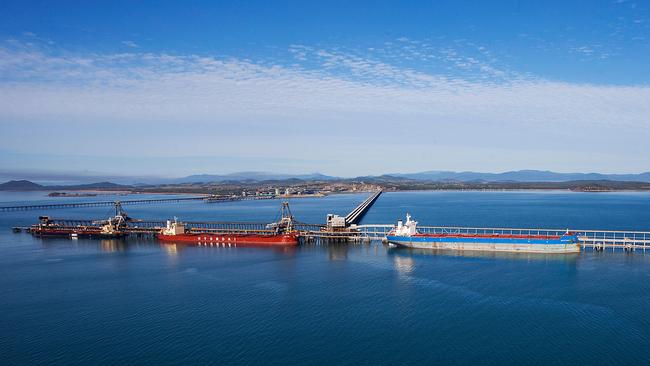Queensland’s coal export bonanza to thrive until at least 2050
Queensland will likely remain the world’s biggest exporter by sea of steelmaking coal until at least 2050.

Queensland will likely remain the world’s biggest exporter by sea of steelmaking coal until at least 2050, despite the state government driving down domestic demand for coal by vowing to phase out coal-fired power by 2035.
Analysis by Queensland Treasury on the state’s coal industry and long-term global coal demand shows that even though domestic thermal coal use will wind down in line with the Palaszczuk government’s renewable energy plan, global demand for metallurgical coal will compensate. In fact Australian and Queensland coal exports are forecast to increase 10 per cent by 2050, mostly from India’s escalating desire for metallurgical coal, as the emerging South Asian giant continues to industrialise.
The work is based on the International Energy Agency’s world energy outlook, which projects outcomes based on what governments are actually doing (STEPS), what international ambitions to fight climate change are (APS), and what the impact of a global quest for net zero emissions by 2050 would be. Overall, Australia’s coal production – for both domestic use and export – is expected to remain equal to 2021 levels until at least 2050, based on the IEA’s STEPS measure. If nations are more ambitious in their climate change policies (under the agency’s APS modelling), demand for Australian coal will fall dramatically, and national coal production will slump to about one-third of 2021 levels by mid-century.
The agency did not model what a global net-zero policy would do to Australia’s coal production.
In October, Premier Annastacia Palaszczuk announced the state would all-but shut down its government-owned coal-fired power stations by 2035 to hit its 80 per cent renewables target by that date.
Despite Queensland’s resources industry decrying Treasurer Cameron Dick’s new coal royalties hike included in his June budget, the analysis shows the state will remain a coalmining behemoth for decades based on global governments’ stated polices.
Queensland Deputy Under Treasurer Dennis Molloy said the analysis showed miners paid the higher royalty rate – which kicks in when the coal price is $175/tonne – only when they were generating extraordinary revenues.
When prices normalised in the medium to long term, Mr Molloy said, the new royalty rate would equate to an extra $2 a tonne paid by miners to the state.




To join the conversation, please log in. Don't have an account? Register
Join the conversation, you are commenting as Logout